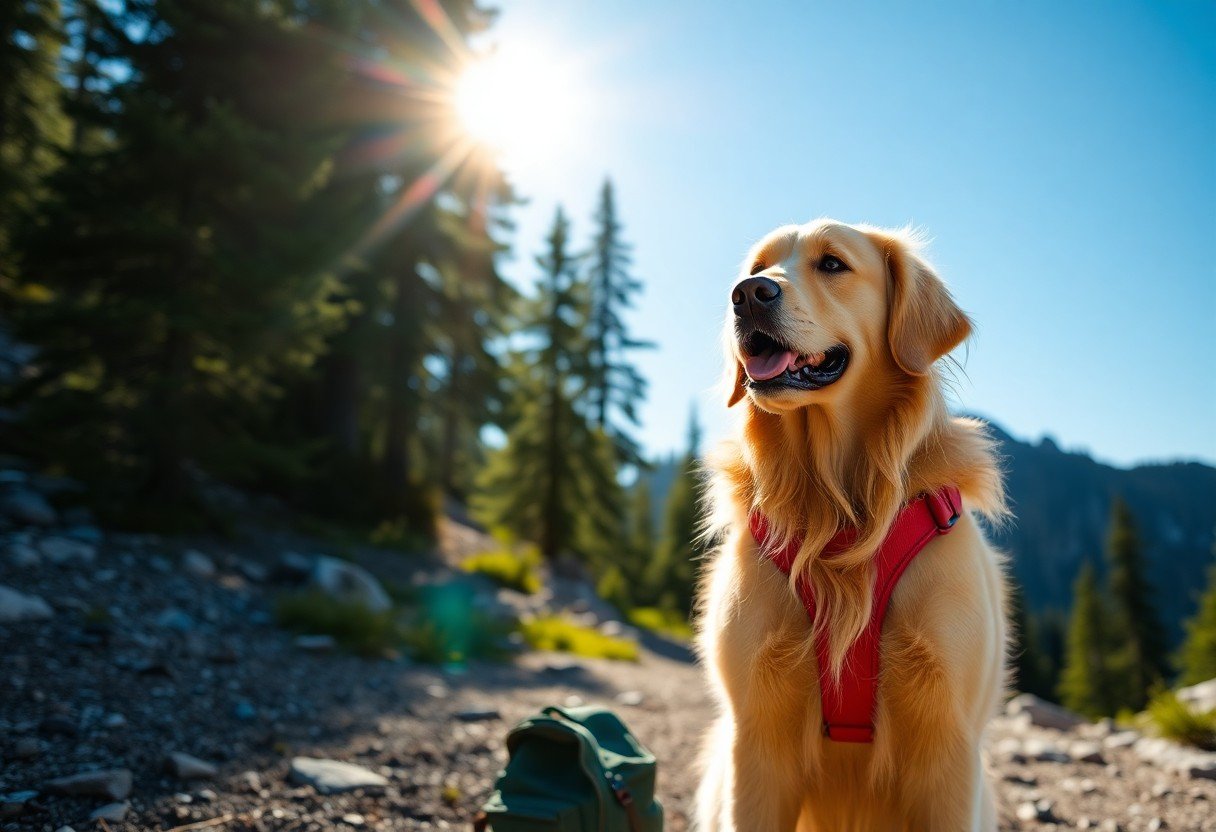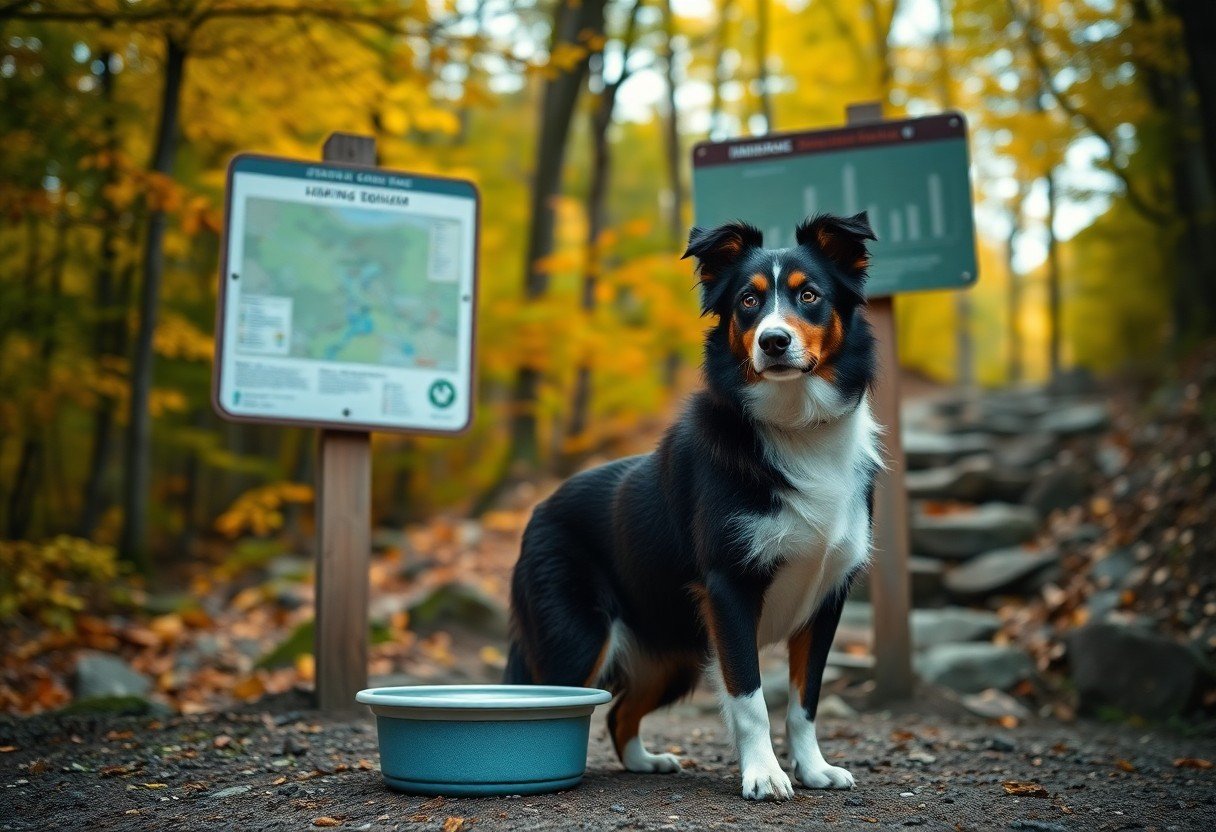Signs your dog is ready for their first big hike can ensure a safe and enjoyable adventure for both of you. Look for consistent energy levels during daily walks, as well as interest in outdoor activities like playing fetch. Your dog should also exhibit positive behavior when encountering new people and environments. Additionally, ensure that your dog is comfortable with varied terrains and is in good overall health. Observing these signs will help you determine if your furry companion is fully prepared for the journey ahead.
Key Takeaways:
- Your dog shows enthusiasm for outdoor activities and exhibits excitement when you’re preparing for a hike.
- Physical fitness is evident through your dog’s stamina and energy levels during walks and playtime.
- Your dog is well-trained with basic commands, ensuring safety and control during the hike.
Sign 1: Physical Fitness
Physical fitness lays the groundwork for your dog’s readiness to tackle a big hike. Dogs that are in good shape can handle varying terrains and longer distances, minimizing the risk of injury or fatigue. Ensure your dog has a consistent exercise routine leading up to your adventure, featuring activities like walks, runs, or play sessions to boost their fitness level.
Assessing Your Dog’s Health
Before venturing out, assess your dog’s overall health. Regular veterinary check-ups will help identify any underlying health issues that could hinder their performance on the trail. Keep an eye out for weight management; overweight dogs may struggle with extended hikes, while a healthy dog will exhibit energy and endurance.
Understanding Stamina Levels
Dogs, like humans, have varying stamina levels based on age, breed, and overall fitness. A young, energetic breed like a Labrador may have higher endurance compared to an older, less active breed. Gradually test your dog’s stamina with short hikes, increasing distance and difficulty to evaluate their response. Look for signs of fatigue, like heavy panting or reluctance to continue, adjusting your plans accordingly to ensure their comfort and safety.
Sign 2: Age and Development
Understanding your dog’s age and physical development plays a vital role in determining readiness for a big hike. Puppies tend to have boundless energy but aren’t yet fully matured in their physical capabilities. In contrast, younger adults generally have an established stamina and strength suitable for more demanding excursions. Different breeds also exhibit varied growth timelines, affecting their hiking readiness.
Ideal Age for Hiking
The ideal hiking age for most dogs is between 1 to 3 years. At this stage, they are physically developed, with strong bones and muscles that can handle the demands of long treks. Some larger breeds may take longer to fully mature, making caution necessary when planning your adventures.
Growth Considerations
Factors like breed, size, and individual health dictate when hiking can safely begin. For smaller breeds, full development often reaches around one year, while larger breeds may take up to two years. If you’re contemplating a hike with a younger dog, gradual exposure to trails and physical activity is important to avoid injuries. Monitoring their energy levels and ensuring they don’t overexert themselves is key during this developmental phase.

Sign 3: Temperament and Behavior
Assessing your dog’s temperament and behavior is crucial for ensuring they’re ready for a big hike. Dogs with strong adaptability and sociability are more likely to handle the various challenges presented by the outdoors. Ensure your dog is comfortable around unfamiliar people and other pets. For more guidance, check out 8 Tips For How To Prepare For Your Puppy’s First Hike.
Socialization Skills
A well-socialized dog exhibits a calm demeanor in the presence of new people, dogs, and sounds. This skill is vital during hikes, where you may encounter other pets and different environments. A dog who pulls, barks, or shows anxiety can disrupt the experience for both of you and others on the trail.
Reaction to New Environments
Your dog’s response to new surroundings can indicate their hiking readiness. A confident dog who explores new terrains and scents without fear is more equipped for a hike than one that shyly retreats or appears fearful. During the initial walk in a new area, observe how your dog reacts to stimuli like different surfaces, sounds, and sights.
New environments can present sensory overload for some dogs, causing them to react negatively. It’s advisable to gradually introduce your dog to varied settings, like parks or trails, to gauge their comfort. Dogs that thrive in the unfamiliar and maintain focus on you during distractions are often better suited for longer treks. Your preparation should involve multiple short excursions before undertaking a significant hike, allowing your dog to adjust and demonstrate their adaptability.

Sign 4: Experience with Short Hikes
Prior experience with shorter hikes can indicate whether your dog is prepared for a more challenging adventure. If your dog has successfully navigated trails that lasted 30 minutes to an hour, it’s a positive sign they can handle longer treks. Look for enthusiasm, stamina, and ease of movement during these shorter excursions. If they remain energetic and eager to explore, your dog likely possesses the foundation needed for a big hike.
Building Up to Longer Trails
Gradually increasing the length and difficulty of your hikes prepares your dog for more demanding terrain. Start with trails that offer a manageable distance and elevation gain, allowing your dog to build physical strength and endurance. Make it a goal to extend these hikes by 10-15% each time, ensuring your pup is comfortable and thrives with the added challenge.
Observation of Behavior on Trails
Paying attention to your dog’s behavior on trails offers insights into their readiness for a big hike. Do they show signs of fatigue, reluctance to continue, or anxiety in new environments? Positive indicators include a curious nature, a willingness to follow your lead, and upbeat body language. Each hike can serve as a confidence booster, helping you gauge your dog’s adaptation to the hiking experience.
For instance, if your dog exhibits comfort in unfamiliar settings, explores confidently, and responds well to commands during short hikes, it suggests they are ready for longer adventures. Look for consistent patterns of behavior; signs of stress or discomfort such as excessive panting, lagging behind, or seeking shade may indicate they are not yet ready for greater challenges. Regular assessment of your dog’s reactions will guide you in planning suitable hiking excursions.
Sign 5: Enthusiasm for Outdoor Activities
A dog that shows enthusiasm for outdoor activities is a strong indicator that they’re ready for their first big hike. If your dog eagerly jumps at the sight of their leash or barks with excitement when you open the back door to go outside, these are positive signs of their readiness. An energetic response to hikes or walks reveals their ability and desire to enjoy longer outings, making them a great companion for outdoor adventures.
Signs of Excitement for Hiking
Look for specific behaviors that showcase your dog’s excitement for hiking. When you mention the word “hike,” do they perk up and wag their tail? Dogs that react enthusiastically to hiking gear, like backpacks or harnesses, are typically ready for the challenge. If your pooch consistently moves towards the door or sits patiently, waiting for you to grab your gear, this eagerness indicates a strong desire to explore the great outdoors.
Motivation to Explore New Places
Your dog’s motivation to explore new locations is a key factor in their hiking readiness. A curious dog often exhibits a keen interest in the environment around them. If your dog enjoys sniffing new scents, investigating unfamiliar terrains, or eagerly follows you on nature walks, they demonstrate the enthusiasm needed for a rewarding hiking experience.
Dogs that thrive on new experiences often get excited upon seeing new landscapes or encountering other animals, showing a level of comfort in engaging with various stimuli. Each hike becomes an adventure as they explore textures, sounds, and smells, building their enjoyment and stamina. This motivation enhances their overall hiking experience and ability to adapt to varying trails. By ensuring your dog has an open mind toward new adventures, you set the foundation for memorable hiking excursions together.
Preparing for Your First Big Hike
Before commenceing on your big hike, planning and preparation are crucial to ensure a smooth and enjoyable experience for both you and your dog. Start by choosing a suitable trail that matches your dog’s fitness level, taking into consideration the distance and terrain. Additionally, check the weather forecast and pack ample water and snacks to keep both of you energized. Finally, familiarize yourself with local regulations regarding dogs on trails, as some areas may have restrictions.
Essential Gear for You and Your Dog
Having the right gear can make a significant difference on your hike. For yourself, pack a durable backpack, a reliable map or GPS, and hiking boots for traction. For your dog, ensure they have a comfortable harness, a sturdy leash, and a dog backpack if they are ready to carry their crucials. Don’t forget portable water bowls and dog-friendly snacks to keep them fueled throughout the adventure.
Safety Considerations
Prioritize safety by familiarizing yourself with potential hazards on the trail. Be cautious of wildlife, insects, and varying weather conditions that can impact your hike. Monitor your dog for exhaustion or signs of discomfort, such as panting or limping. In addition, ensure your dog is properly vaccinated and has a microchip or ID tag in case they get lost.
In particular, trail hazards like steep drop-offs or rough terrain demand your attention. Always keep a close eye on your dog’s behavior, as it can indicate how comfortable or stressed they are. Ensure your dog has a secure grip on rocky areas, and watch for signs of heat stress in warm weather. Carry a first-aid kit tailored to both humans and canines, which includes items like gauze, antiseptic wipes, and bandages to deal with minor injuries. Additionally, having your dog on a leash can prevent encountering aggressive wildlife and losing your pet in unfamiliar environments.
Conclusion
Taking this into account, recognizing the signs that your dog is ready for their first big hike is necessary for a safe and enjoyable experience. By ensuring your pet is physically fit, mentally prepared, and responsive to training, you can boost their confidence and comfort on the trail. Proper gear and hydration are also key to your hiking success. For more tips, check out How to Get Your Dog Ready for Hiking in Colorado.
FAQ
Q: How can I tell if my dog is physically fit for a big hike?
A: Check your dog’s endurance through regular walks or shorter hikes. They should show consistent energy and not tire easily. Look for signs of fatigue during these activities
Q: What behavior indicates my dog is excited and ready for a hiking adventure?
A: Signs of excitement include wagging tails, jumping, and focused attention on hiking gear. If your dog shows eagerness to explore and run, they’re likely ready for a hike.
Q: Are there specific commands my dog should respond to before we go hiking?
A: Yes, your dog should reliably respond to basic commands like sit, stay, and come. This ensures control over them in new environments and helps keep them safe on the trail.






